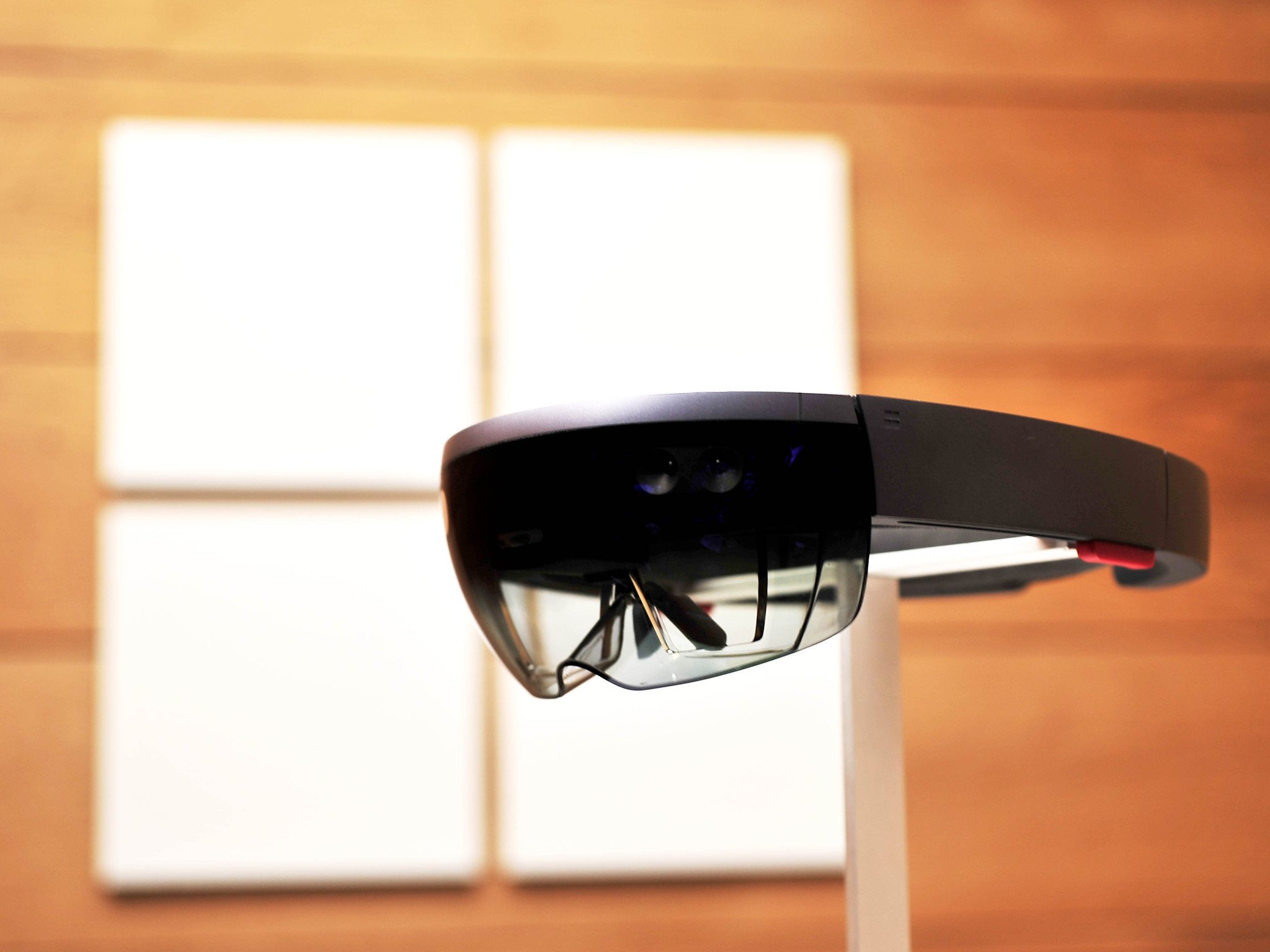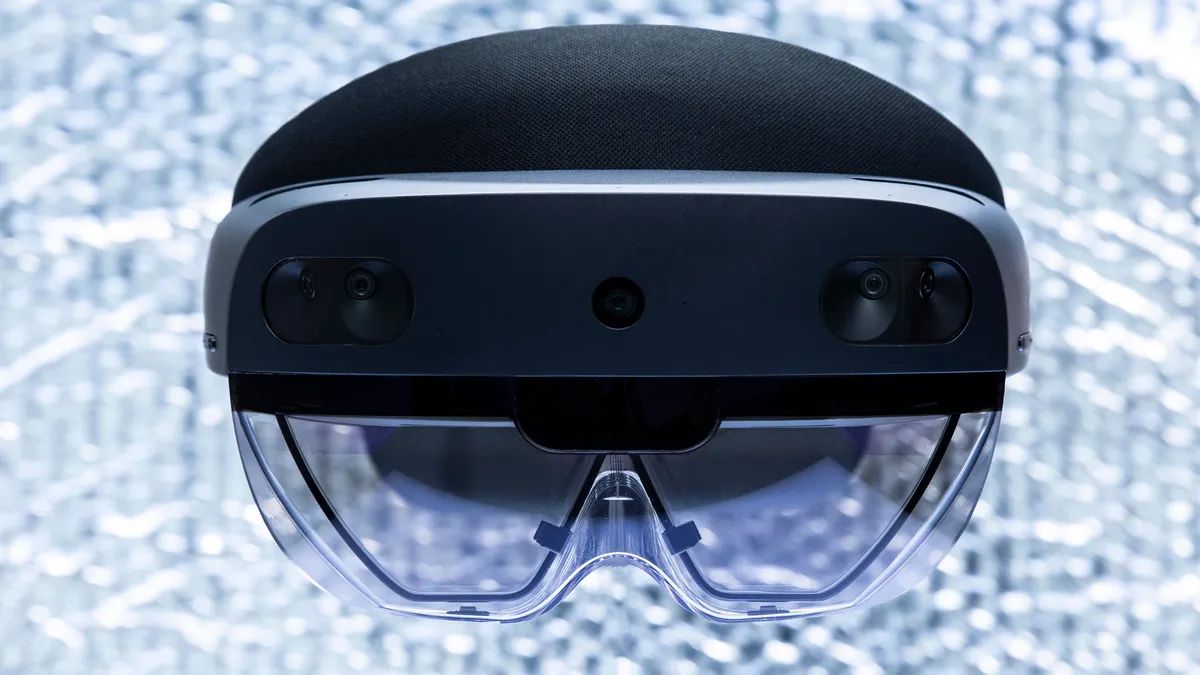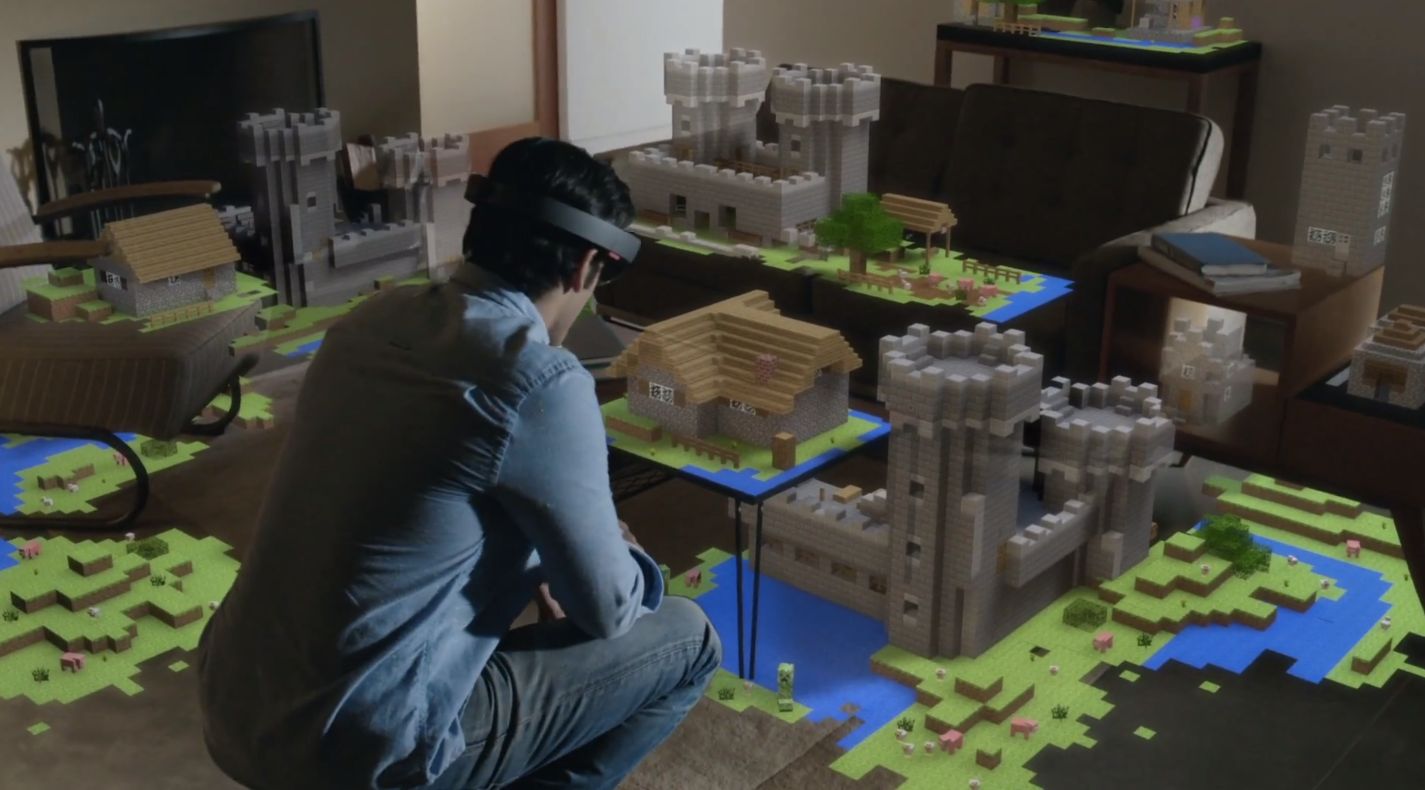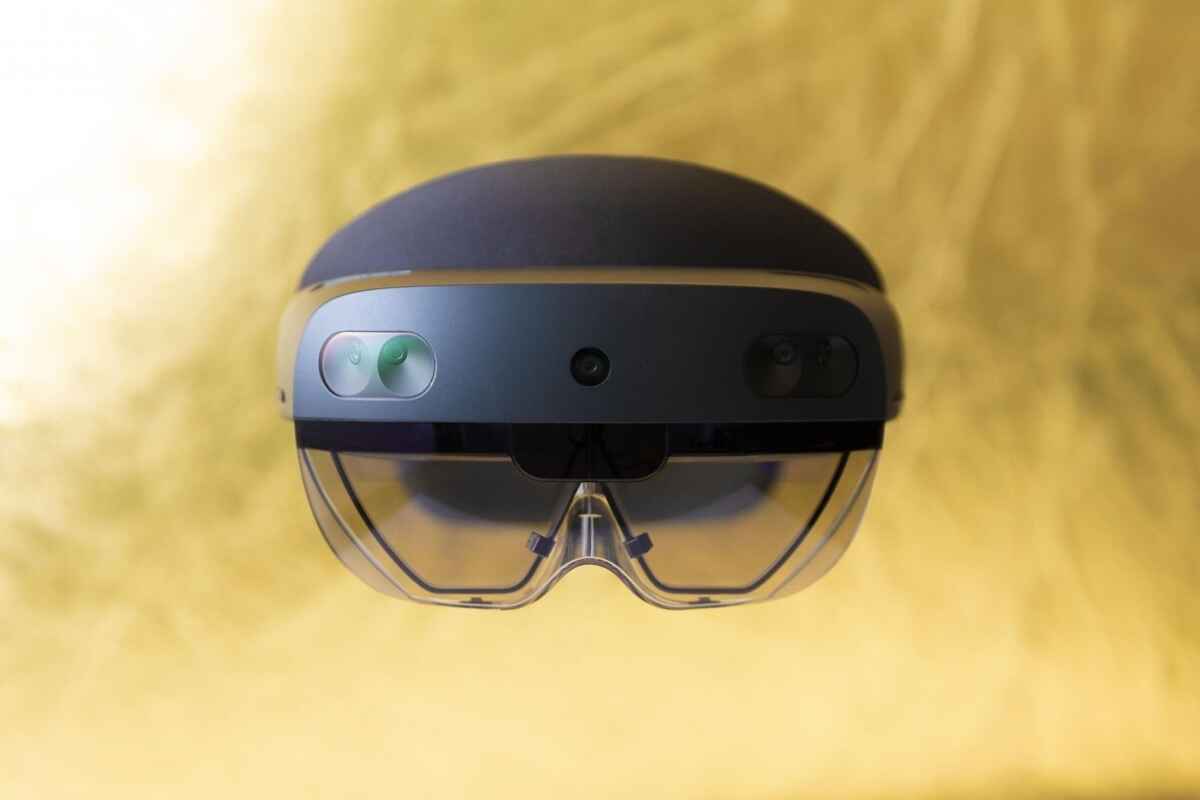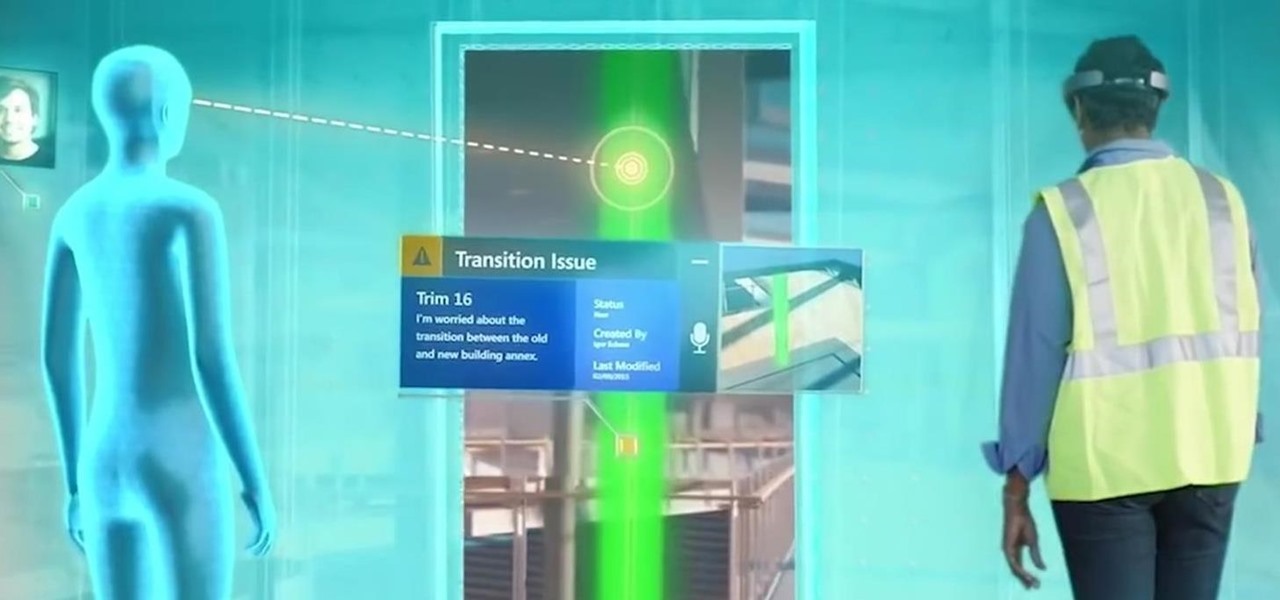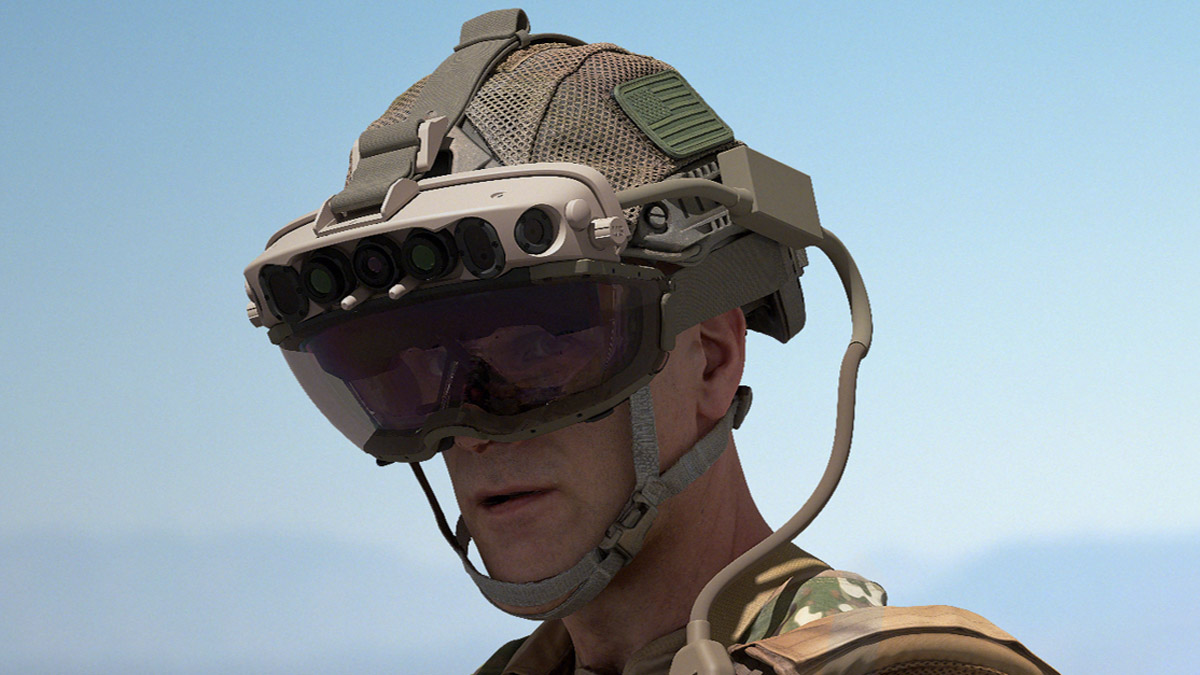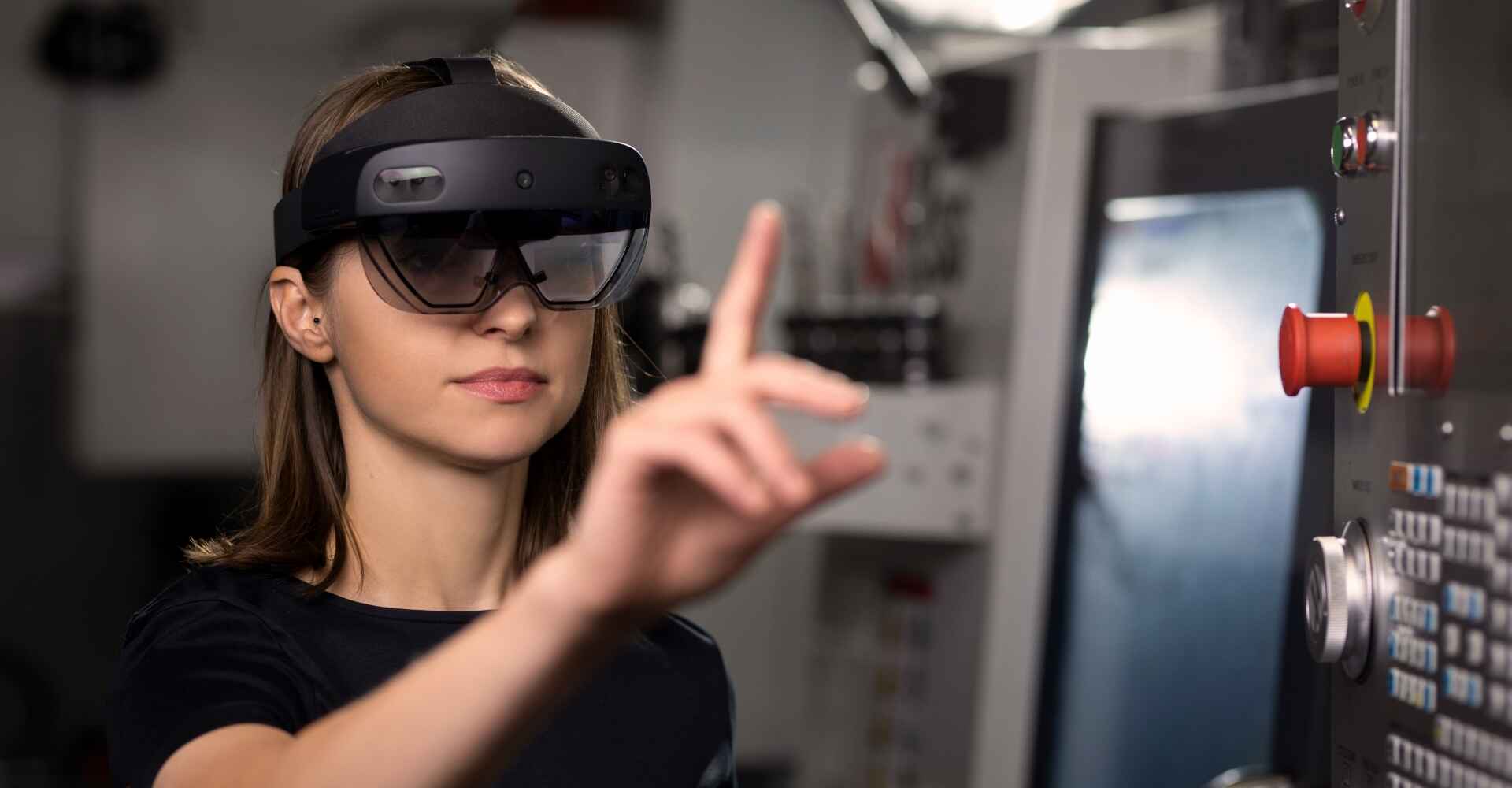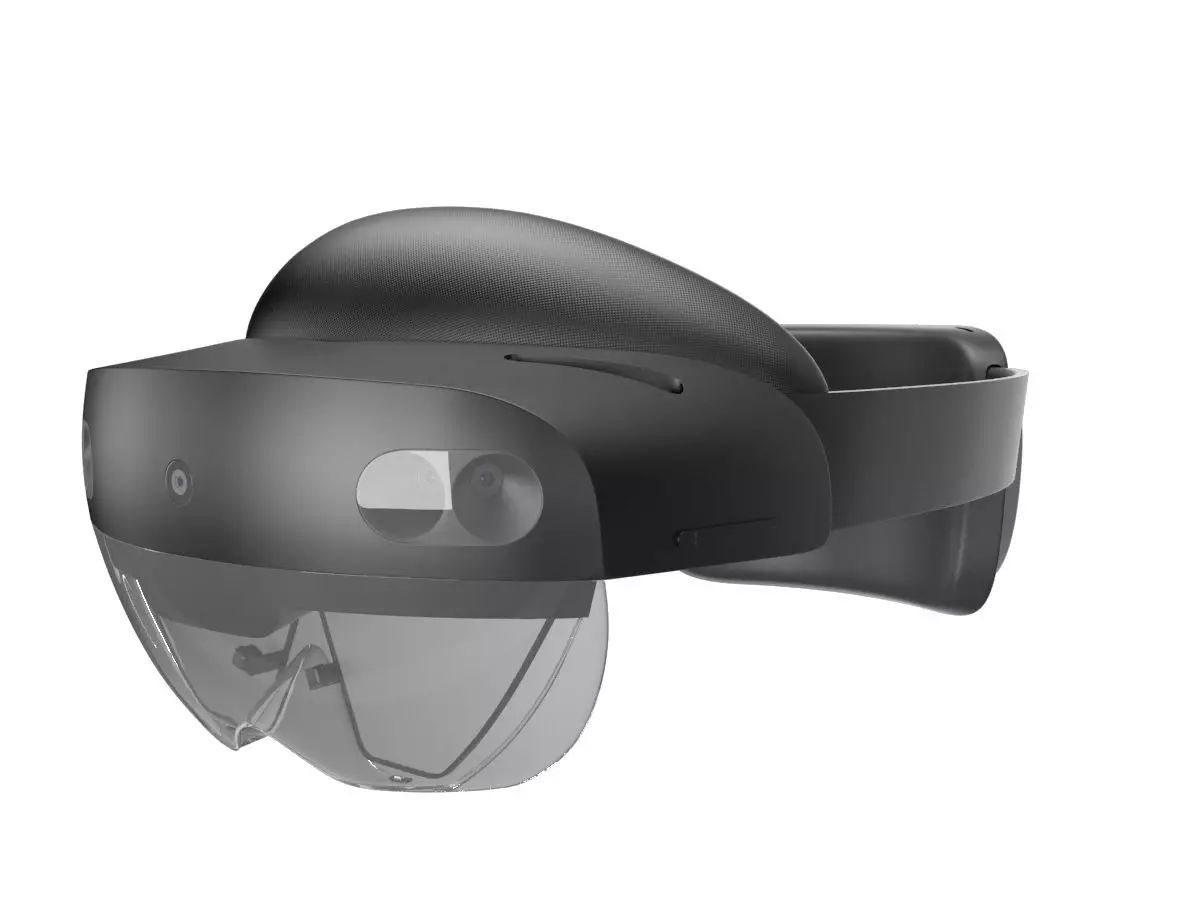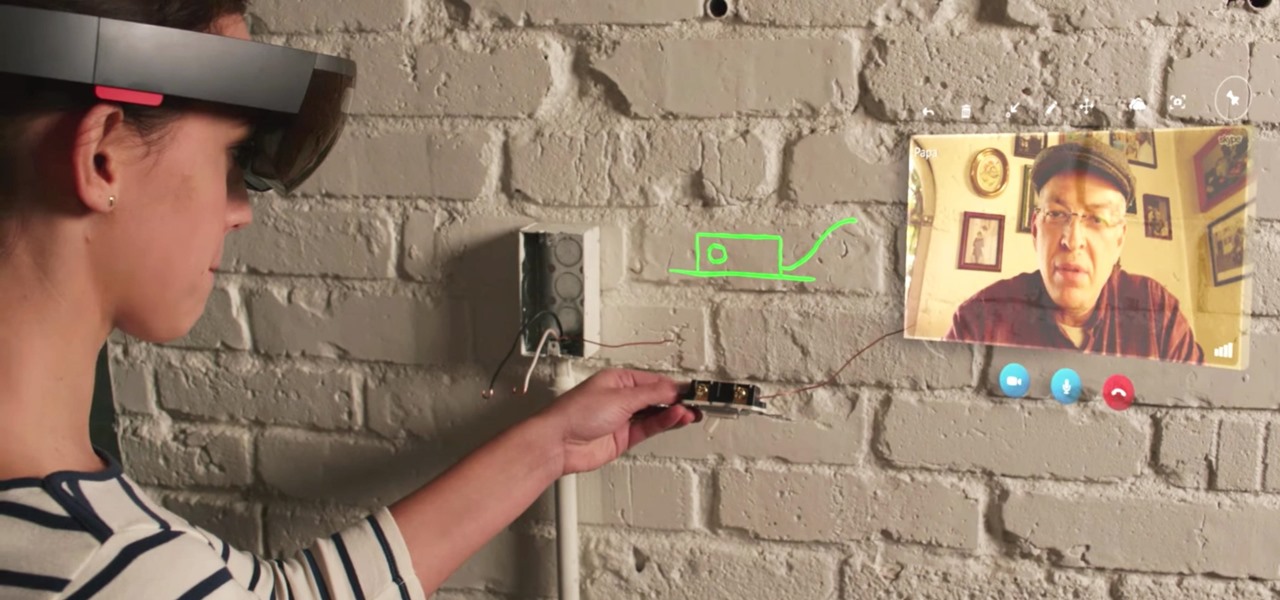Introduction
The HoloLens, developed by Microsoft, is a groundbreaking augmented reality (AR) device that has been making waves in the technology industry. Since its release, one question that has puzzled many is the reason behind its hefty price tag. Priced significantly higher than other consumer electronic devices, such as smartphones or gaming consoles, the HoloLens has ignited curiosity and intrigue.
In this article, we will delve into the factors that contribute to the high cost of the HoloLens. By understanding these factors, we can gain insights into the cutting-edge technology, research and development costs, limited market availability, high manufacturing costs, advanced components and materials, quality control, and testing processes that make the HoloLens such an expensive device.
By exploring these aspects, we will get a clearer picture of why the HoloLens is priced the way it is and how it fits into the wider landscape of augmented reality technology. So, let’s dive into the captivating world of the HoloLens and uncover the reasons behind its price tag.
Overview of the HoloLens
The HoloLens is a cutting-edge augmented reality (AR) device created by Microsoft. It is designed to project holographic images onto the user’s field of view, allowing them to interact with virtual objects in the real world. Unlike virtual reality (VR) devices that immerse users in a completely virtual environment, the HoloLens enables users to overlay digital content on top of their real-world surroundings.
With its sleek and futuristic design, the HoloLens features a sophisticated system of sensors, cameras, and speakers that work in harmony to deliver a seamless AR experience. Users wear the device as a headset, which is equipped with transparent lenses that direct holographic images onto the user’s eyes.
This technology opens up a world of possibilities in various industries, including gaming, education, design, healthcare, and engineering. Users can interact with 3D models, access digital information in real-time, and collaborate with others remotely, all through the power of holographic computing.
One of the standout features of the HoloLens is its spatial mapping capability. It can scan and analyze the user’s environment, mapping out surfaces, objects, and spatial dimensions in real-time. This allows for accurate placement and interaction of holograms within the user’s physical space, creating a truly immersive experience.
Moreover, the HoloLens comes equipped with advanced gesture recognition and voice command technology, enabling users to manipulate and control holographic content using their hands and voice. The device also supports gaze tracking, allowing users to interact with holograms simply by looking at them.
The HoloLens is not just a standalone device; it is supported by an ecosystem of software and applications that harness the power of mixed reality. Developers can create their own holographic experiences using tools such as Unity and Visual Studio, opening up endless possibilities for innovation and creativity.
Overall, the HoloLens offers a unique and highly immersive AR experience that bridges the gap between the physical and digital worlds. With its advanced technology and versatility, it has the potential to revolutionize how we interact with technology and pave the way for new and exciting applications in various industries.
The Cutting-Edge Technology
The high cost of the HoloLens can be attributed, in large part, to the cutting-edge technology incorporated into the device. Microsoft has invested significant resources in developing and refining the technology behind the HoloLens, pushing the boundaries of what is possible in augmented reality.
One of the key technological advancements of the HoloLens is its advanced spatial mapping and tracking capabilities. The device uses an array of sensors, including cameras, inertial measurement units (IMUs), and depth sensors, to precisely map and track the user’s physical environment in real-time. This allows for accurate placement of holographic content and a seamless blending of the virtual and real worlds.
In addition to spatial mapping, the HoloLens is equipped with high-resolution transparent displays that project holographic images onto the user’s field of view. The displays use waveguide technology, which directs light to create the illusion of holograms floating in the user’s environment. These displays deliver stunning visuals and ensure a crisp and vibrant AR experience.
The HoloLens also incorporates sophisticated gesture recognition and voice command technology. This enables users to interact with holographic content using natural gestures and voice commands, making the experience more intuitive and immersive. The device can accurately detect hand movements, such as tapping, pinching, and grabbing, allowing users to manipulate virtual objects with precision.
Furthermore, the HoloLens boasts advanced tracking of the user’s gaze direction. This means that users can interact with holograms simply by looking at them, leading to a more natural and seamless user experience. The device tracks the user’s eye movements and adjusts the holographic content accordingly, ensuring that it stays in the user’s line of sight at all times.
The HoloLens also stands out in terms of its spatial sound technology. The device has built-in speakers that deliver spatial audio, allowing users to perceive holographic sounds as if they were coming from specific locations in their physical environment. This enhances the immersion and realism of the AR experience, making it more engaging and captivating.
Overall, the cutting-edge technology incorporated into the HoloLens sets it apart from other AR devices. The advanced spatial mapping, high-resolution displays, gesture recognition, voice command technology, gaze tracking, and spatial sound capabilities create a truly immersive and transformative augmented reality experience. However, the development and integration of this state-of-the-art technology contribute significantly to the overall cost of the device.
Research and Development Costs
A significant factor contributing to the high price of the HoloLens is the extensive research and development (R&D) that went into creating the device. Microsoft invested substantial resources and expertise in exploring and refining the technology behind the HoloLens, resulting in a cutting-edge augmented reality experience.
The development of the HoloLens required years of research, experimentation, and engineering. Microsoft’s R&D teams worked tirelessly to overcome technological challenges and push the boundaries of what was previously thought possible in augmented reality. This involved combining various disciplines, including computer vision, optics, machine learning, and human-computer interaction, to create a device that delivers seamless holographic experiences.
The R&D process included prototyping, testing, and iterating on multiple versions of the device. Microsoft sought feedback from developers, users, and industry experts to improve the HoloLens’ functionality, comfort, and performance. This iterative process required significant investments in time, equipment, and skilled personnel.
Furthermore, Microsoft invested in creating a robust software development kit (SDK) and application programming interfaces (APIs) to empower developers to build innovative holographic experiences. This involved extensive software engineering, documentation, and support to ensure developers had the necessary tools and resources to create compelling AR applications for the HoloLens.
The research and development costs of the HoloLens also encompass intellectual property and patent filings. Microsoft has filed numerous patents related to the technology and design of the HoloLens, protecting their innovations and ensuring a competitive edge in the market. Patent filings require substantial financial investments and further contribute to the overall cost of the device.
In summary, the HoloLens’s high price is partly justified by the extensive research and development efforts that went into its creation. The investment in R&D enabled Microsoft to achieve breakthroughs in augmented reality technology, resulting in a device that offers a cutting-edge AR experience. However, these R&D costs contribute significantly to the overall price of the HoloLens.
Limited Market Availability
Another factor that contributes to the high cost of the HoloLens is its limited market availability. Unlike mass-market consumer electronic devices, the HoloLens is targeted towards a niche market of developers, businesses, and institutions who can leverage its capabilities in their respective fields.
Initially, the HoloLens was released as a developer edition, limiting its availability to a select group of individuals and organizations. This strategic approach allowed Microsoft to gauge interest, gather feedback, and refine the device before a wider release.
Even after the developer edition, the HoloLens remained predominantly targeted towards enterprise customers. Microsoft positioned the device as a platform for building customized business solutions, ranging from training and simulations to architectural visualization and remote collaboration. This focus on enterprise customers, who have specific use cases and the budget to invest in cutting-edge technology, justified a higher price point.
Furthermore, the limited market availability of the HoloLens makes it a niche product with lower economies of scale compared to mass-market devices. Manufacturing and distribution costs are spread over a smaller customer base, which necessitates a higher price to cover expenses and ensure profitability.
Additionally, the limited market availability of the HoloLens is influenced by regulatory and certification requirements. Certain industries, such as healthcare and aviation, have strict regulations and safety standards that need to be met before adopting augmented reality technology. The HoloLens must undergo rigorous testing and certification processes to ensure compliance, which further adds to the cost and restricts its availability.
As the technology behind the HoloLens continues to evolve and improve, it is expected that Microsoft will expand the device’s market reach and make it more accessible to a broader consumer base. With advancements in manufacturing processes and economies of scale, we can anticipate a potential reduction in cost and wider availability in the future.
High Manufacturing Costs
One of the key factors contributing to the high price of the HoloLens is the significant manufacturing costs involved in producing the device. The intricate design, advanced components, and complex assembly process all contribute to the overall manufacturing expenses.
The HoloLens is a meticulously engineered device that requires precise manufacturing techniques to ensure optimal performance and durability. The transparent displays, for example, are crafted using specialized manufacturing processes to achieve high-resolution visuals and maintain transparency. These processes are complex and require specialized equipment and skilled labor, driving up the cost of production.
Moreover, the HoloLens incorporates an array of advanced components, including sensors, cameras, speakers, microphones, and processors, each carefully selected and integrated to deliver a seamless augmented reality experience. These components are often sourced from specialized suppliers, which increases their cost compared to off-the-shelf components used in mass-market devices.
In addition to the advanced components, the HoloLens features a sophisticated system for tracking the user’s environment and movements. This includes multiple cameras, depth sensors, and IMUs, all of which contribute to accurate spatial mapping and gesture recognition. The calibration and assembly of these sensors require meticulous precision, as any deviation can adversely affect the device’s performance. These additional assembly and calibration steps add to the manufacturing complexity and ultimately increase the cost of production.
Furthermore, stringent quality control measures are implemented throughout the manufacturing process to ensure that every HoloLens device meets the highest standards of performance and reliability. This involves rigorous testing of each component, calibration of sensors, and verification of functionality. Any defective parts or units are discarded, adding to the overall manufacturing costs.
It is important to note that as technology evolves and manufacturing processes become more refined, the cost of production may decrease over time. With advancements in manufacturing automation and economies of scale, the costs associated with producing the HoloLens may be reduced, potentially resulting in a more accessible price point for consumers.
Advanced Components and Materials
One of the key factors contributing to the high cost of the HoloLens is the utilization of advanced components and materials in its construction. The incorporation of cutting-edge technology and high-quality materials ensures optimal performance and durability, but also adds to the production expenses.
The HoloLens integrates a range of advanced components, carefully selected to deliver a seamless augmented reality experience. These components include powerful processors, high-resolution displays, sensors, cameras, microphones, speakers, and tracking systems. Each component is specially designed and tailored for the unique requirements of the HoloLens, ensuring optimal performance and functionality.
For instance, the transparent displays of the HoloLens are manufactured using waveguide technology, which directs light to create lifelike holographic images. These displays require complex fabrication processes to achieve the necessary clarity, resolution, and transparency. The use of specialized displays adds to the overall cost of the device.
In addition to advanced components, the HoloLens also incorporates high-quality materials to enhance user comfort and durability. The headset is carefully engineered to be lightweight and ergonomic, using materials such as carbon fiber and lightweight plastics to achieve a balance between durability and user comfort. These materials, while providing a superior user experience, often come at a higher cost compared to conventional materials used in mass-market devices.
Furthermore, the HoloLens is equipped with a variety of sensors and cameras that enable accurate spatial mapping, gesture recognition, and eye-tracking. These sensors are precision-engineered to detect and interpret the user’s movements and gaze direction accurately. The use of sophisticated sensors and cameras contributes to the overall cost of the device.
The inclusion of these advanced components and materials not only ensures top-notch performance but also represents the investment made by Microsoft in delivering a premium augmented reality experience. The utilization of cutting-edge technology and high-quality materials is a testament to the company’s commitment to pushing the boundaries of what is possible in AR.
While the use of advanced components and materials contributes to the higher cost of the HoloLens, it is important to note that as technology progresses and becomes more readily available, the costs associated with these components and materials may decrease. This could potentially lead to a more affordable price point for consumers in the future.
Quality Control and Testing
Ensuring the highest level of quality and performance is a critical aspect of manufacturing the HoloLens, and thorough quality control and testing processes add to the overall cost of the device. Microsoft places significant emphasis on quality assurance to deliver a reliable and robust augmented reality experience to its users.
The quality control process starts from the selection of components and materials. Microsoft works closely with suppliers to ensure that all components used in the HoloLens meet strict quality standards. This includes conducting rigorous inspections, performance testing, and certification processes for each component to ensure optimal functionality and durability.
During the assembly stage, specialized technicians carefully calibrate and assemble the HoloLens devices to ensure they align with precise specifications. Each device undergoes thorough inspections and testing, with a focus on functionalities such as spatial mapping, gesture recognition, eye-tracking, audio, and visual output.
Rigorous testing protocols are employed to thoroughly evaluate the device’s performance in various scenarios and conditions. This includes both hardware and software testing to ensure compatibility, stability, and reliability. Different use cases and scenarios are simulated to verify the accuracy and responsiveness of the HoloLens in real-world conditions.
Microsoft also conducts extensive user testing, gathering feedback from developers, businesses, and early adopters to identify any potential issues or areas for improvement. This user testing helps to further refine the HoloLens’ functionality, usability, and overall user experience.
In addition, regulatory compliance and safety testing are essential components of the quality control process for the HoloLens. Depending on the region and the industry it is intended for, the device may need to comply with specific standards and regulations. This involves extensive testing to ensure that the HoloLens meets all necessary safety requirements, electromagnetic compatibility standards, and regulations related to eye safety.
The thorough quality control and testing processes undertaken by Microsoft contribute to the overall cost of manufacturing the HoloLens. While ensuring a high-quality product adds to the expenses, it also results in a device that meets stringent standards and provides a reliable and seamless augmented reality experience to users.
By investing in quality control and testing, Microsoft aims to deliver a device that not only meets customer expectations but also ensures long-term satisfaction and customer loyalty. Continuous improvement and innovation in quality assurance processes are critical to Microsoft’s commitment to delivering a premium AR device.
The Future of AR Technology
The HoloLens is not just a standalone device; it represents the future of augmented reality (AR) technology. As the technology continues to evolve and improve, we can expect significant advancements in the capabilities and affordability of AR devices in the coming years.
One of the key areas of development in AR technology is the miniaturization of components. As components become smaller and more power-efficient, AR devices will become sleeker, lighter, and more comfortable to wear. This will lead to enhanced user experiences and increased adoption of AR in various industries and everyday life.
Another area of focus is the improvement of display technology. AR devices with higher-resolution displays, wider field of view, and improved color accuracy will provide more immersive and realistic experiences. This will enable users to interact with holographic content in a more natural and engaging way.
Advancements in sensor technology will also play a significant role in the future of AR. More sophisticated sensors, such as depth sensors and eye-tracking cameras, will enable enhanced spatial mapping, gesture recognition, and gaze tracking. This will allow for more precise interactions with virtual content and a deeper integration of the virtual and real worlds.
Furthermore, the development of advanced software algorithms and machine learning techniques will further enhance the capabilities of AR devices. These advancements will enable more accurate object recognition, real-time image processing, and intelligent content placement in the user’s environment. This will result in more seamless and personalized AR experiences.
As AR technology progresses, we can also expect greater integration with other emerging technologies, such as 5G networks, cloud computing, and artificial intelligence. This integration will enable more complex and data-intensive AR experiences, with real-time collaboration, advanced analytics, and cloud-based processing capabilities.
Moreover, the future of AR technology lies not only in the hardware and software advancements but also in the development of a robust ecosystem of AR applications and content. As more developers and creative minds explore the potential of AR, we can anticipate a wide range of innovative and practical applications across industries such as healthcare, education, entertainment, design, and more.
Ultimately, the future of AR technology is bright and full of possibilities. The HoloLens serves as a stepping stone, pushing the boundaries of what is possible and paving the way for more accessible, powerful, and versatile AR devices. As the technology continues to evolve and mature, we can expect AR to become an integral part of our daily lives, revolutionizing how we work, play, learn, and interact with the world around us.
Conclusion
The high cost of the HoloLens can be attributed to a combination of factors. The cutting-edge technology, extensive research and development efforts, limited market availability, high manufacturing costs, utilization of advanced components and materials, and rigorous quality control and testing processes all contribute to its price tag.
The HoloLens represents a significant leap forward in augmented reality technology, offering a truly immersive and transformative AR experience. Its advanced spatial mapping, gesture recognition, eye-tracking, and spatial sound capabilities create a seamless blending of the virtual and real worlds.
While the current price of the HoloLens may limit its accessibility to a broader consumer base, it is important to recognize that the device is primarily targeted towards developers and enterprise customers who can leverage its capabilities in various industries.
As technology continues to advance and manufacturing processes become more refined, we can anticipate a potential reduction in the cost of the HoloLens. The future of AR technology holds promises of advancements in display technology, miniaturization of components, improved sensors, and greater integration of AR with other emerging technologies.
Overall, the HoloLens represents a glimpse into the future of augmented reality and showcases the potential of immersive holographic experiences. While the current price may be a barrier for some, the HoloLens sets the stage for more accessible and powerful AR devices that will transform how we interact with technology and our surroundings.







